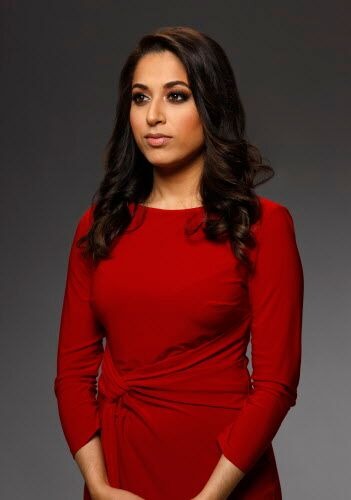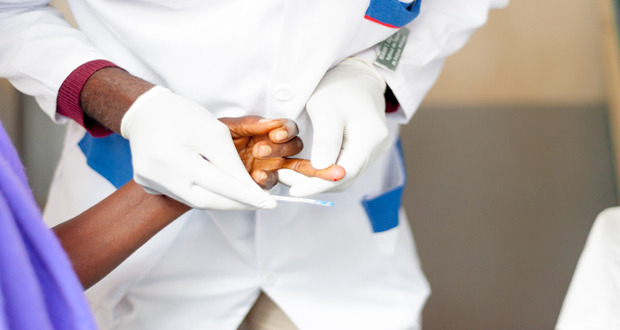Shooting down HIV hope
4 Feb 2019 by Evoluted New Media
When Malaysia Airlines flight MH17 was shot down over Ukraine in 2014, all passengers and crew were killed – among them Dr Joep Lange who had dedicated his life to curing HIV. Moved by the loss to the HIV research community Seema Yasmin has written an excellent book charting Lange’s fight to end a global epidemic…
What was your motivation for writing?The Impatient Dr. Lange?
Joep Lange was killed on Malaysia Airlines flight MH17 when the plane was shot out of the sky by pro-Russian rebels. He was on his way to the International AIDS Society conference at the time and the news of his death sent shock waves through the global AIDS community. News headlines said losing Dr Lange meant the world had lost a cure for HIV. That's because Joep had been working on ways to eliminate HIV. He had played a crucial role in so many parts of HIV – from searching for a cure to finding treatments to prevent a mother passing on HIV to her baby, and many worried how the HIV world would progress without him. Sure, there are many brilliant scientists and advocates working to end the epidemic, but Dr Lange stood out because of his tenacity, brutal honesty and passion. This book is one way of sharing the lessons he learned in the fight against HIV and extending his legacy.
Why do you think Dr Lange was so passionate about working on a cure?
Injustice infuriated him. He said HIV preyed on the poor and the vulnerable. After decades spent helping to test treatments for HIV, he was in a hurry to find a cure. He believed people living with HIV should live long, full lives and that suppressing the virus, even eliminating the virus from the body, was the next step to that goal. He was incredibly impatient and in a hurry to find a cure.
[caption id="attachment_70232" align="alignleft" width="260"] To be in with a chance of winning a copy of The Impatient Dr. Lange, send your name along with your institution/company to phil.prime@laboratorynews.co.uk by February 28 2019.[/caption]
To be in with a chance of winning a copy of The Impatient Dr. Lange, send your name along with your institution/company to phil.prime@laboratorynews.co.uk by February 28 2019.[/caption]
To what extent are HIV research scientists carrying on Dr Lange’s legacy?
As well as caring for patients and leading clinical trials, Dr Lange mentored Ph.D. students. The book tells the story of one particular woman, Dr Jintanat Ananworanich, who now works for the U.S. Military HIV Research Program studying potential cures. She was mentored and trained by Dr Lange. In fact, when he was killed, he was on his way to hear her give a presentation about the search for a cure at the AIDS conference.
Are we further away from a cure for the HIV epidemic without him?
It feels that way – not just because of his scientific acumen but because he was an instigator and a disruptor. He was vocal and not very politically correct when it came to calling out institutions who he felt were not acting fast enough and not contributing enough to the search for a cure. Dr Lange didn't hold back. The HIV world lost not only a scientist and physician but a prominent advocate for an end to the epidemic and a search for a cure.
Why is scientific outreach in book-form so important in an age where information is so easily accessible online?
People read books! Book sales have gone up in the past few years in the U.S. and U.K. and there's a desire to consume information across platforms. It's important to share important stories like this one in as many ways as possible so the information is accessible to a wide audience. I'd like to see this book turned into a film to gain a different audience. It's more than a story about an exceptional man, it weaves together the origin story of HIV with the life story of a scientist and reveals him to be human and flawed. Dr Lange wasn't perfect and yet he didn't let that hold him back. He was determined to do all he could to end the epidemic. I think that's more inspiring than stories of geniuses and saints. Reading about his life inspires us all to try and better the world.
You teach Global Health Storytelling at Stanford University. What does a typical class involve?
I'm Director of the Stanford Health Communication Initiative and one of my tasks is to study the way misinformation spreads alongside microbes. One way to combat the epidemic of fake news about health and science is to have doctors and scientists who are not only knowledgeable in their fields but who are excellent storytellers. They need to be able to connect with a lay audience and translate technical information so that it is accessible to everyone – from your younger brother to your grandma. I'm passionate about everyone having access to this data. My students take personal experiences – whether it's a patient encounter that had an impact on them, an experience on a field trip or an incident in the lab, and they turn that into a story which they eventually share in front of a live audience. The class transforms the way they look at data and human stories and challenges them to engage with patients in a really human - and not a robotic, super clinical – way!
Can you tell us about ?Debunked!, your forthcoming book?
Debunked! dissects 50 medical myths and science conspiracies, from baby powder and ovarian cancer, to vaccines and autism, and tracks the history of public health to where we are now – a time and place where we believe fake news and dismiss the truth. The book also examines who gets to determine the truth, why misinformation about health and science spreads and how rumours can be contagious and spread just like epidemics of infectious disease.

Dr. Seema Yasmin is a journalist, author, medical doctor and professor.





